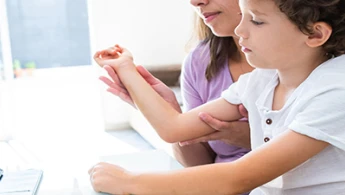How to Enhance Movement Response with Layers of Facilitation
July 30, 2018
2 min. read

When used in conjunction with each other, layers of facilitation enhance the response of the patient to the therapists intervention, regardless of their diagnosis or deficits. Using these principles of effective intervention within each treatment session will maximize benefit to the patient throughout all stages of recovery.
Manual Contacts
A very important layer of facilitation is the placement of the therapists manual contacts. When a therapist places their hands on a patient, they can either facilitate or inhibit movement.
For example, if the therapist wants to enhance or improve the function of elbow extension they can place their manual contact on the musculature of the triceps to get a stronger and more functional response. If the therapist places their hand on the biceps, which is the antagonist of the triceps, elbow extension will be inhibited.See an example of this in the video below.
Resistance
Another excellent layer of facilitation is the use of resistance. When you use resistance appropriately you can control a movement, avoid unwanted movements, and increase strength. Resistance can tell a person where you want them to go. Their instinct is to push into your hands. Resistance facilitates movement by activating muscle fibers.
For example, when cueing a patient to fully turn their upper torso and head to the left, have the patient face you, place your hands on their shoulders, and resist them turning. This will create a movement thats much more dramatic than they could achieve on their own. You can combine this with visual cues by having the patient look to the left. This will add another layer of facilitation to resistance (see below) and give you a more robust response.
Visual Cues
Patients will always have a better response if you give them a visual target. Visual cues also give patients a goal or objective to strive for. For example, having a patient look at a visual target behind them will give a much better response than just telling them to look to the right.
Together is Better
Visual cues, manual contacts, and resistance used individually are beneficial. When used together they create facilitating inputs that summate to enhance functional movement.
Below, watch Kay Wing discuss the importance of manual contacts in facilitating movement in a short clip from her MedBridge course, Fundamentals of Therapeutic Exercise Part Two.






